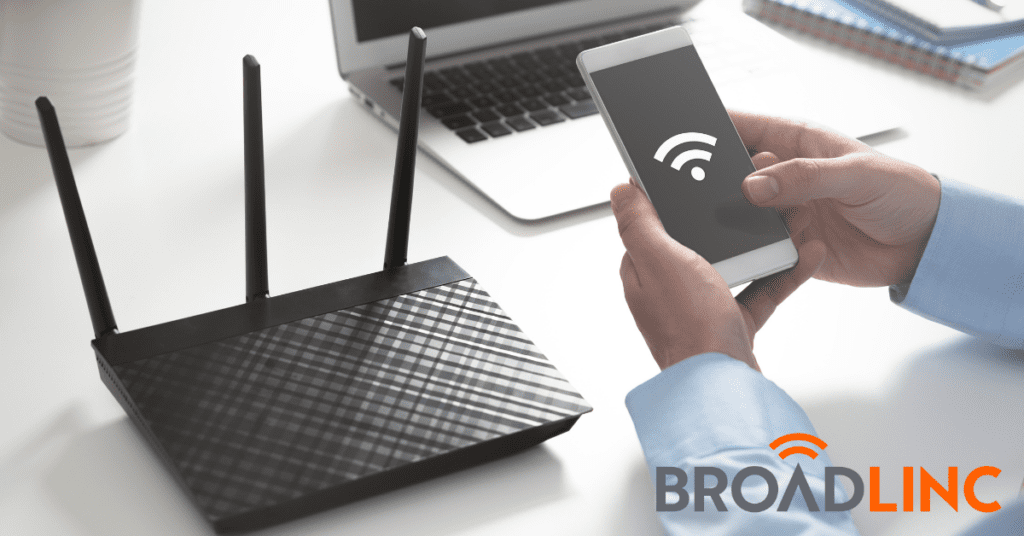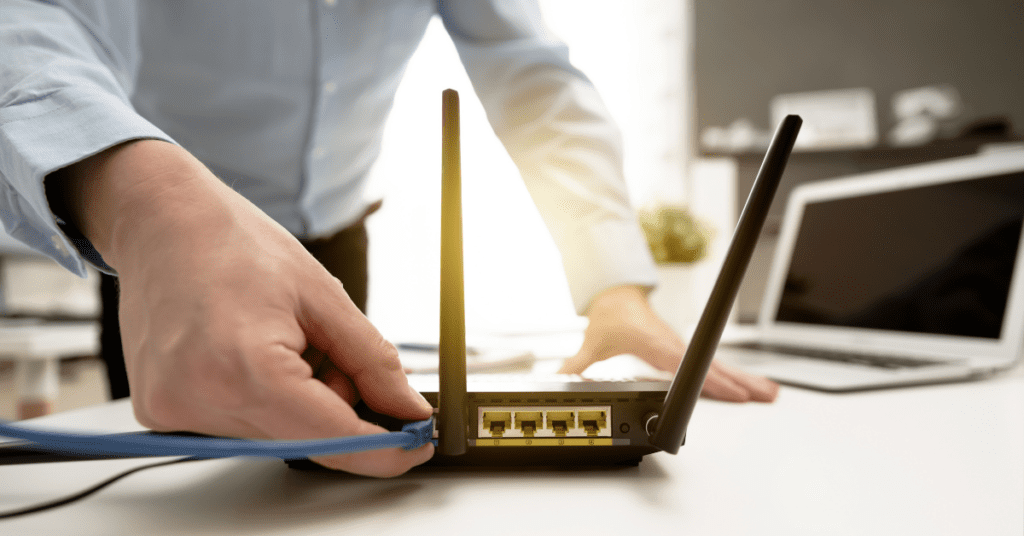
Does Faster Internet Speed Increase WiFi Range?
A wireless network can give you Internet without a cable, but sometimes, the signal can be weak. If you’re trying to get work done or just want a fast connection to stream content, it can be a frustrating experience. You may wonder if a faster internet connection l can increase the range of your wireless Internet connection.
The answer is no. WiFi signal is not reliant on faster speeds. To increase your Wi-Fi signals, move your existing router, or upgrade to a mesh Wi-Fi network.
Read on to learn how Wi-Fi and Internet speed relate and how you can wirelessly get a strong Internet connection.
Want To Make Your Life Easier? Our Plume Whole Home WiFi offers advanced AI-powered WiFi management through Plume HomePass, so you don’t have to!
The Relationship Between Internet Speed and WiFi Range
Some people have Wi-Fi problems, and they believe that increasing Internet speed will improve their Wi-Fi performance. In some cases, they may pay more for faster Internet.
However, these two are not related. Internet speed refers to how much data is transferrable through an Internet connection. Meanwhile, Wi-Fi range refers to how far a wireless signal can travel and still allow you to connect.
If you have faster Internet, your Wi-Fi connection speed will increase if your range is good. However, increasing your speed will not increase your range.
Factors That Influence WiFi Range
With that said, what does influence the Wi-Fi range? Several factors influence Wi-Fi range, including:
- The type of Wi-Fi router you have and its power
- How far you are from the WiFi router
- Walls, furniture, or any other obstructions
- Frequency band
If you move closer to the WiFi router, move the router to a central location, or upgrade to a mesh system, you may get a better signal.
Understanding the Role of the Wireless Router in a Wi-Fi Network
So, what is a wireless router? It allows people to wirelessly connect to an Internet network, acting as its gateway. In addition, the router can allow for a wired connection or be the network’s centerpiece. Knowing a wireless router can help you understand how to get the best Internet connection.
Wireless routers can come in several types, many of which cover different ranges or are tied to your ISP. When you’re investigating your router, be sure that you know its specs. You can find that on the back of the router, or by contacting your ISP.
Ways to Improve WiFi Range
First, your router needs to be in an ideal location. For example, putting the router inside a cramped room may not have much signal. However, you may increase your range if you put it in an open area, such as the living room.
In addition, buy a router that fits within the square feet of your home or office. If you live in a bigger house, a router with a short-range may not cut it. If your router is older, consider upgrading it as well.
Another solution, if you don’t want to replace your router, is to purchase a WiFi booster or extender. This device can extend the range of your router, giving you a steady Internet connection. Wi-Fi extenders cost little, and you can save money by buying a new router. However most Wi-Fi extenders require the users to choose between the extenders Wi-Fi connection or the main router when moving around the home. For this reason, and the possibility of interference bing introduced by these devices, we don’t recommend them anymore.
The best solution, in our opinion is a mesh Wi-Fi system. Our Plume HomePass Whole Home WiFi system is a mesh system. With these systems, instead of having a single router in one location, you have multiple mesh extenders that bring the Wi-Fi signal closer to your users. When done right, a mesh Wi-Fi system can reduce interference and drastically improve the experience. Also with a mesh system, your wireless devices connect to the extender with the best signal automatically and there is only one network to connect to.
If you feel your range is impaired due to interferenc,e you can change the frequency of your Wi-Fi signals. To do this, refer to your router’s user manual to change the Channel Selection. From there you can change your channel and give it a different frequency. Many routers have an automatic option that “listens” for the best channel to operate in based on interference it may detect.
It requires trial and error. If you’re not noticing a change in your speed, please contact your Internet service provider. It could be another connection issue.
Maximizing Wi-Fi Signal Strength for Optimal Network Performance
Being in an area with the best WiFi strength is ideal. However, if your connected device is only getting a couple of bars, you will deal with slower and unreliable speeds.
As mentioned, look for an area where your Wi-Fi router can send its signal freely. Avoid putting it near furniture, in a smaller room, and in an area where you won’t use your devices.
Also, you must be mindful if you have multiple routers and the range extenders mentioned above. Multiple devices can interfere with each other if they’re too close together, causing issues with your Internet speeds. So put them as far as possible to ensure faster Internet speeds. Mesh network extenders such as the ones we use with our Plume HomePass Whole Home Wi-Fi are designed to work in conjunction with one another.
It is to note, many connected devices such as smart TV’s and printers create their own hotspot network for “guest” or setup access and are one of the worst offenders when it comes to what we call “rogue” Wi-Fi signals. Be sure those devices are connected to your home wifi and their settings for direct connection are turned off (see those devices owners manuals for more information on how).
Also, if your router is older than five years, or if it is an inexpensive model, you may want to consider an upgrade. Modern routers have better signals, ensuring better network coverage throughout your home.
Finally, you may want to consider an ethernet cable. While wireless connections can be more convenient, a wired connection ensures more reliability and saves your Wi-Fi bandwidth for devices that need wireless signals. You may use this when doing more demanding tasks, such as streaming video games or downloading a large file. While a strong Wi-Fi speed can suffice, it is limited. If your router has ethernet ports, consider plugging some cables in there and be sure to use a cable that can support the speeds you need.

Troubleshooting Common Wi-Fi Network Issues with Your Wireless Router
If you’re still having Wi-Fi signal issues, please contact your ISP. However, if they aren’t providing the Wi-Fi router, their help may be limited. . Before calling them, here are some things you can do to troubleshoot it yourself.
With that said, it can be a daunting task to troubleshoot. Before you worry too much, let’s discuss some of the best ways to troubleshoot your wireless networks.
Be Sure You Have a Strong Signal
Before testing, ensure you’re in an area with a full connection. For example, be in an open area, and have a clear line of sight to your router. This ensures you get the most reliable results if you do a speed test.
Change the Channel
If you go to your router settings, you may notice that you have changed your channel, which changes the signal frequency. Why does this matter? Having other devices with the same signal can lead to crowding, which can lower speeds. Changing your channel can be a quick way to troubleshoot your wireless router.
Update Router Firmware
Sometimes, your wireless router is outdated, which can interfere with its performance. Bugs or hacker exploits can lead to your router becoming slow. The goal of updates is to patch any issues that can occur and to improve performance.
Visit your router’s website to learn how to download and install the latest firmware. Be sure to turn on automatic updates if possible. This way, you do not have to search for updates constantly. With that said, it’s still worth it to check for an update every few months to ensure that you’ve installed everything, as some optional updates may not be installed.
If you’re unsure, contact your Internet provider to learn how to do this.
Go to Your Router’s Settings
Sometimes, playing around with your router’s settings can help you. When you visit the router settings, be sure that you try changing some things around. For example, if your encryption is WEP, change it to WPA2 or WPA3, the industry standard. Also, disabling WPS can prevent hackers. If you’re unsure of which settings to use, you can contact your ISP. In addition, if someone changes the current settings, you may want to reset them.
Replace Older Routers
Technology is constantly evolving, so it makes sense that you need to replace your routers. If your router is over five years old, replace it with a newer one for the fastest Internet connection. You may also want to contact your ISP to see what the best, newest router you should be looking for.
Consider an upgrade even if your router is only a couple of years old. With the fast technology moves, even newer routers can bring slower speeds.
Check Your Cables and Connections
Sometimes, your router may be faulty if your cables are not connected. If your router’s connection is loose, fix that. Look around for any tears in the cable. If you’re still unsure, you should buy a new cable and see if that fixes the problem.
Ensure you purchase your cables from a website where the return policy is lenient. This way, you can return the cables if you rule out they were an issue.
Check Your Router’s Placement
Many people do not realize that a single router can be ruined if it’s in an area with obstructions. We’ve mentioned putting it in a larger room with little furniture or walls to interfere. In addition, we stress that you make sure it’s in an area without device or appliance interference. Finally, put any unused devices in another room. These devices can include baby monitors, smart thermostats, or other items that rely on the Internet.
Reboot Your Router
“Have you tried turning it off and on again?” It’s generic advice, but that’s for a reason. Quite often, a restart can fix any problems. But, unfortunately, technology can sometimes have no real solution other than giving it a reboot.
To reboot your router, be sure that you unplug its power cord. Please wait a few minutes so that the electricity is drained from it. Then, plug it back in, and wait a few minutes for it to start fully. Once you see the lights turned on and solid, you can check your connection. If it’s better, then great. If not, then you may need to:
Contact Technical Support
It may be an issue with your ISP or the router if all else fails. Therefore, you must contact your ISP. Your ISP could send someone to investigate the cause of your faulty connection or replace your router altogether.
Let your ISP manage your Wi-Fi
If all of this is too challenging for you, see if your ISP has a managed Wi-Fi service. This is usually available for an additional fee, but is well worth the money. At Broadlinc, we know our customers have better things to do, and they expect us to be the experts on Wi-Fi. So because of that we offer our Plume HomePass Whole-Home Wi-Fi service. With managed wifi, the ISP can see signal quality, and guide decisions to maximize performance and experience.
Conclusion
Your WiFi signal is not reliant on the speed of your Internet plan. Instead, it can depend on where the router is, its age, or your device’s distance from it. In addition, signal interference can lead to your router not giving you the best connection.
Move your router around and avoid furniture or thick walls. Consider looking into newer routers if your router is a few years old. All significant devices should be near the access point for the best performance. In addition, most routers may need help if you live in a bigger home. Consider investing in a mesh Wi-Fi network if you’re encountering dead zones in your house. It can give you a faster connection through a stronger signal, which means more speed. Finally, if you have other wireless networks, be sure the routers are far away or do away with them..
If you’re still having problems, consider troubleshooting. Update your router settings, change the channel, and update your router. If your current router still has issues, you may need to upgrade or spend a few extra dollars and let your ISP manage your Wi-Fi for you..
We hope this article was helpful to you. Technology can be a hassle, but when you know what to do, you can save yourself plenty of headaches.
